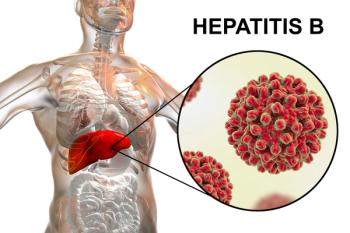
Lower rates of intracranial hemorrhage seen with Pradaxa
Twice-daily dabigatran etexilate mesylate (Pradaxa, Boehringer Ingleheim) was shown to be associated with lower rates of fatal and traumatic intracranial hemorrhage compared with warfarin, according to a retrospective subanalysis published online, April 5, in Stroke, the Journal of the American Heart Association.
Twice-daily dabigatran etexilate mesylate (Pradaxa, Boehringer Ingelheim) was shown to be associated with lower rates of fatal and traumatic intracranial hemorrhage (ICH) compared with warfarin, according to the results of a retrospective
“All anticoagulants carry an increased risk of bleeding that should be considered along with the benefit of stroke risk reduction when making treatment decisions,” said John Smith, MD, PhD, senior vice president for clinical development and medical affairs, Boehringer Ingelheim Pharmaceuticals, Inc. “Intracranial hemorrhage can be a devastating complication of anticoagulation and is responsible for the majority of disability and death from treatment-related bleeding. These data further our understanding of the risk profile of Pradaxa compared to warfarin, showing a lower rate of both fatal and traumatic ICH with Pradaxa 150 mg in patients with non-valvular atrial fibrillation, including those who were older.”
In this study, Robert G. Hart, MD, from the Population Health Research Institute, McMaster University and Hamilton Health Sciences, Hamilton, Ontario, Canada, and colleagues looked at a group of patients who participated in the RE-LY trial, a multicenter, phase 3, randomized study that investigated whether dabigatran etexilate (2 blinded doses) was as effective as well-controlled warfarin for stroke prevention in 18,113 participants with atrial fibrillation.
The investigators followed patients for a mean of 2 years and noted 154 ICH events in 153 patients. Patients assigned to dabigatran 150 mg and 110 mg experienced fewer fatal ICH events (n=13 and n=11) and fewer traumatic ICH events (n=11 for both doses) than those who were taking warfarin (n=32 and n=24). Rates were 0.76% per year for those assigned to warfarin and 0.31% and 0.23% per year among those assigned to dabigatran 150 mg and dabigatran 110 mg, respectively (P<.001 for either dabigatran dose versus warfarin). It should be noted that, although studied, dabigatran 110 mg is a dose that has not been FDA-approved.
Consistent across treatment arms, patients who experienced ICH events tended to be older (mean age, 75 [with ICH] vs. 71.5 [without ICH], relative risk, 1.1 per year; P<.001), had a history of stroke or transient ischemic attack (TIA) (relative risk, 1.8; P=.001), used aspirin concomitantly (relative risk, 1.6; P=.01), and were assigned to warfarin (relative risk, 2.9; P<.001).
“The key take-away based on the findings of this subanalysis is that in RE-LY there were fewer fatal (13 vs. 32) and traumatic (11 vs. 24) ICH events in patients treated with Pradaxa 150 mg compared to warfarin,” Dr Smith told Drug Topics. In addition, the results highlight critical predictors of ICH, which should be considered when prescribing anticoagulation therapy, including age, prior history of stroke or TIA, and aspirin use.
“These data add to the previously reported results of the pivotal RE-LY trial, which showed the overall rate of ICH was 59% lower with Pradaxa 150 mg [n=38] compared with warfarin [n=90],” he said.
Dabigatran is indicated to reduce the risk of stroke and systemic embolism in patients with non-valvular atrial fibrillation. The reasons that patients reported for discontinuing use of the drug in RE-LY were bleeding and gastrointestinal events.
Newsletter
Pharmacy practice is always changing. Stay ahead of the curve with the Drug Topics newsletter and get the latest drug information, industry trends, and patient care tips.











































































































































































































